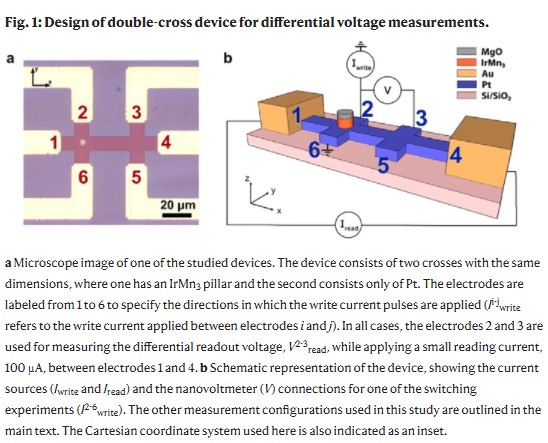The evolution of hard disk storage shows how we've managed to shrink down technology over decades. From having a room full of disks and tapes to owning a single drive that one could hold in the palm of one's hands, we've managed to develop portable devices for storing data. However, one thing has plagued all storage media to this day. Reading and writing have traditionally been done using magnetic heads. Thus, the disk layers themselves would have to be magnetizable. Hyper Physics notes that ferromagnetism is a unique property of some metals that enable them to become magnetized. New research into antiferromagnetic materials has opened the door to new options in AI and memory construction.
New Research into Antiferromagnetic Materials
A paper published in Nature outlines some cutting-edge research that might help us to develop more resilient storage devices and increase the rate of AI processing of data sets. Antiferromagnetic (AFM) materials are resilient to magnetic interference, making them ideal for specific uses. Among the possible benefits of this new material subset include cryptocurrency mining, AI processing, and even space programs.
Most AI processing systems, from Siri to Alexa, to Netflix, utilize large data sets. They collect voice patterns, searches, and several other elements to provide better service to their clients. Yet as the data sets grow, the storage space and processing power needed to gain insights also rise exponentially. The development of AFM materials may provide a cost-effective way for these massive lakes of data to be processed more efficiently by AI agents.

Arpaci, S., Lopez-Dominguez, V., Shi, J. et al. Observation of current-induced switching in non-collinear antiferromagnetic IrMn3 by differential voltage measurements. Nat Commun 12, 3828 (2021). https://doi.org/10.1038/s41467-021-24237-y
The Current Paradigm in Big Data
The best current solution that businesses have for dealing with data lakes is physical or cloud storage. Both of these rely on, at their core, magnetic-based memory storage. They are naturally rapid and don't wear out through regular read/write cycles, making them ideal for an enduring data set. Since these massive businesses are such lucrative markets, the semiconductor manufacturers have spent billions over the last decade improving magnetic RAM (MRAM) processes to be more efficient. Unfortunately, today's MRAM systems are built atop ferromagnetic materials.
High-performance AI applications can utilize these MRAM modules, but they are far less efficient since they require large-capacity transistors just to supply data at the rate that the AI can process it. The bottleneck, therefore, is in the materials used to manufacture these MRAM modules. An additional bottleneck is that these MRAM modules take up significant space. Finally, the limitation in scaling these modules down comes from the impact of the ferromagnetic materials when magnetic fields become concentrated. As a result, the current density of MRAM models is the best we'll probably get through typical ferromagnetic material bases. Thus, research into AFM materials seems to be the best way forward. With more efficient materials at the base of these systems, we can scale them down in size more effectively.
The Savior of Future Computing
AFM materials demonstrate inherently faster dynamics than the ferromagnetic bases used to build contemporary MRAM modules. There are no macroscopic magnetic poles that allow AFM materials to perform well without magnetic fields interacting with the module's processes. Since AFMs can also be scaled down, they could theoretically form the basis for much smaller MRAM modules once the material becomes available. Most security officials will have already spotted another crucial benefit to AFM modules. Typical disk drives can be erased or corrupted through exposure to magnetic fields. AFM-based modules would have no such weakness since they wouldn't be affected by external magnets.
Building On the Success of the Past
In 2020, Tech Xplore mentioned an experiment that saw electrical writing of data onto an AFM chip-base. The device used platinum manganese (PtMn) to significantly reduce the size of the module and reduce the electrical current needed for a successful write cycle. What's more important, the module was the first ever built that was compatible with current semiconductor manufacturing processes. This breakthrough is significant because it means memory producers could use their existing equipment and techniques to start producing AFM MRAM modules en-masse.
The current research uses a new material, iridium manganese (IrMn3), to simplify the read and write processes. AFM materials typically have smaller read and write signals than their ferromagnetic competitors. The new design model utilizes six electrical terminals to increase efficiency - an improvement over the four terminals used in the 2020 experiment.
What Should We Expect?
It's not a sure thing that AFM will be the future of data storage and processing, but the signs are promising. Without magnetic interference, we could see memory modules being shrunk down even further. In addition, modules for use in space become far more efficient since it doesn't have to worry about interference from background sources. The applications may vary significantly from one to another, but the underlying technology remains the same. Once manufacturers start adopting and fine-tuning the processes, we could see a significant change in how we consider mass storage devices.





Comments